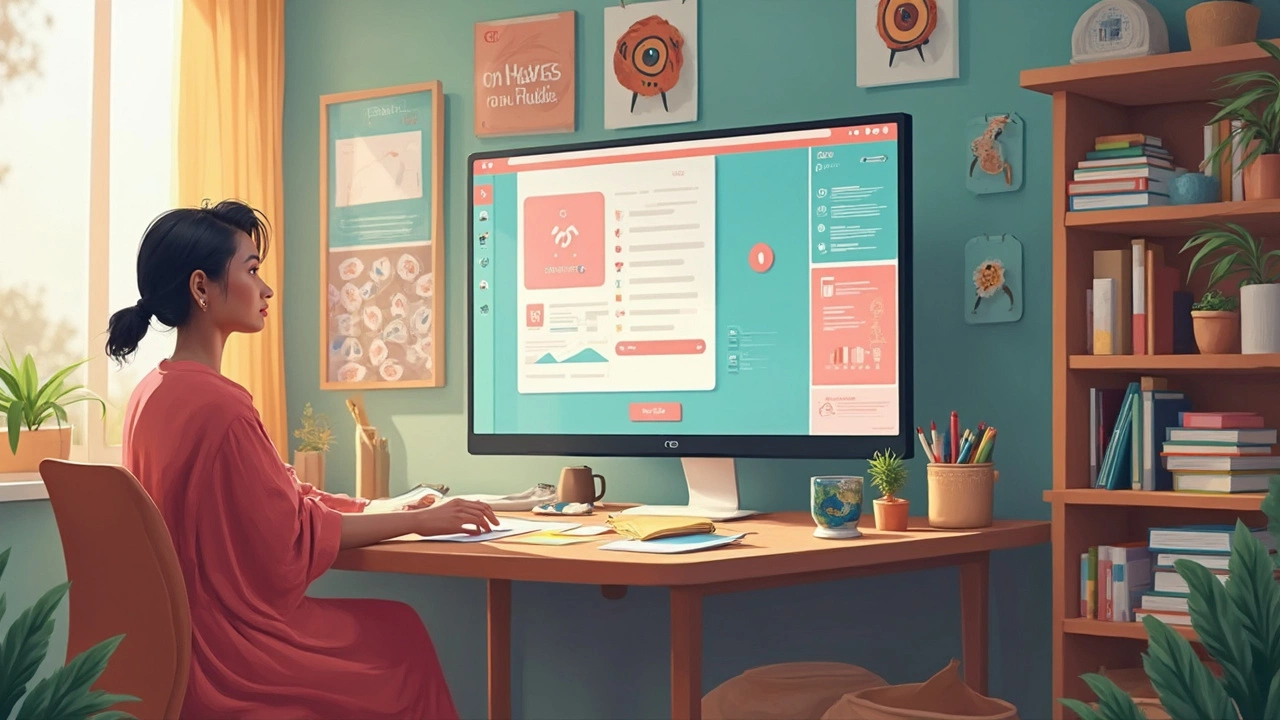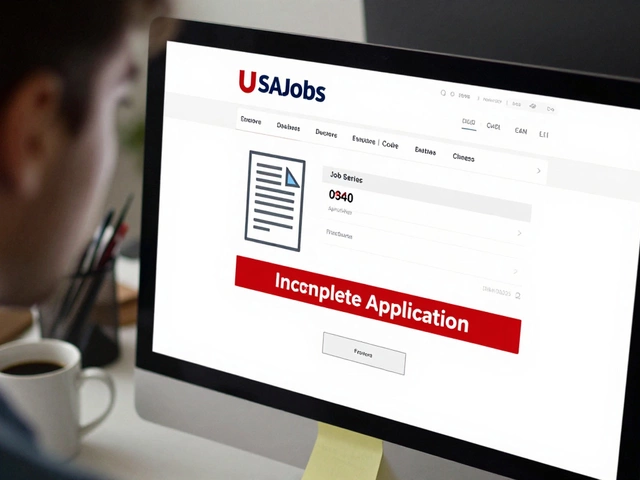Sit back for a second and think—when was the last time you joined a class or took a course online? E-learning platforms have slowly turned into everyone's go-to for picking up new skills, whether it's high school math or learning Photoshop for the first time. These tools are everywhere, from the Zoom calls you dread to video lessons you can replay a hundred times.
The big thing people want to know is: which type of e-learning platform gets used most and why? Is it those huge course marketplaces, university portals, or something more behind the scenes? The answer actually surprises a lot of people. It's not always about the flashiest site—it's about what actually works for millions every day, like those trusty learning management systems (LMS) that quietly run school and company online courses.
If you're new to online learning or looking for your next best upgrade, knowing what these platforms actually do and how they can make (or break) your learning experience is really important. Stick around for some honest facts, a sprinkle of tips, and what to look for so you don't waste time signing up for the wrong thing.
- What Exactly Is an E-Learning Platform?
- The Different Types and Which Tops the List
- Why LMSs Reign Supreme
- What Makes E-Learning Platforms So Useful?
- How to Pick the Right One for You
What Exactly Is an E-Learning Platform?
An e-learning platform is just a website or app where people learn stuff online. It's more than a video playlist—think of it as a digital classroom where you can find courses, take quizzes, chat with teachers or classmates, and even turn in homework.
The most important thing is that e-learning platforms let anyone learn from anywhere, as long as they've got an internet connection. No need to sit in a physical classroom. Some platforms cover everything from school math to languages, coding, cooking, and even how to build a rocket (no joke—search long enough, you'll find it).
Here’s what you’ll usually find on a solid e-learning platform:
- Video lessons or live classes (sometimes both)
- Quizzes, tests, and assignments
- Discussion boards or chats
- Progress tracking so you know how far you’ve come
- Certificates or badges for completing courses
Some e-learning sites are open for anyone to join—like Coursera or Udemy. Others are private, set up just for a single school or company (think Blackboard or Moodle). There are also massive open online courses (MOOCs), and smaller niche sites for super specific topics.
Want to see just how popular this has become? Take a look at this table:
| Platform Name | Active Users (2024) | Type |
|---|---|---|
| Coursera | 124 million | MOOC |
| Moodle | 400 million | LMS |
| Udemy | 71 million | Marketplace |
| Khan Academy | 135 million | Free E-learning |
Here’s the kicker: a e-learning platform can be as simple as a YouTube channel with lessons, but most have all these extra tools so you can actually interact, ask questions, and track how you're doing. That’s what sets real e-learning platforms apart from just watching videos online.
The Different Types and Which Tops the List
Online learning might seem like one giant blob if you’re not used to it, but actually, there are a few main types of platforms out there. Here’s how they line up:
- Learning Management Systems (LMS) – Platforms like Moodle, Canvas, and Blackboard. Schools and companies depend on them for posting assignments, quizzes, grading, and getting everyone in one digital spot.
- Massive Open Online Courses (MOOCs) – Platforms like Coursera, Udemy, and edX. Great for people anywhere to sign up and take courses from top universities or experts. These are especially popular for learning new skills on your own schedule.
- Virtual Classrooms – Platforms such as Google Classroom or Zoom. These focus on interactive classes where students and teachers meet online in real time.
- Specialized Learning Apps – Things like Duolingo or Khan Academy. These often target one subject and make learning more interactive and gamified.
So, which one is used the most? No question, learning management systems are number one, especially in schools and companies. According to 2024 research from EdTech Digest, over 70% of US K–12 schools rely on an LMS for all their online teaching and homework.
| Platform Type | % of Institutions Using | Common Examples |
|---|---|---|
| Learning Management Systems | 78% | Moodle, Canvas, Blackboard |
| MOOCs | 42% | Coursera, Udemy, edX |
| Virtual Classrooms | 58% | Google Classroom, Zoom |
| Specialized Apps | 33% | Duolingo, Khan Academy |
LMSs take the lead because they’re basically the Swiss Army Knife of e-learning—good for tracking progress, organizing content, holding discussions, and grading work all in one place. That’s a big deal for teachers and trainers who want less mess. For students, it keeps everything simple. Anyone wanting to get serious about digital learning usually ends up using one at some point.

Why LMSs Reign Supreme
If there’s one platform that runs most of our digital classrooms and training hubs, it’s the learning management system, or LMS. These aren’t just for schools anymore. Companies, government offices, and even hospitals use them daily to keep learning on track. In 2024, the eLearning Industry site estimated that over 83% of organizations worldwide relied on an LMS for training or education. Think of names like Moodle, Canvas, Blackboard, and Google Classroom—these shape how lessons roll out everywhere.
So, why does an LMS always top the charts compared to other e-learning platforms? It’s all about control, flexibility, and tracking. Teachers and trainers can load videos, assignments, quizzes, and resources into one simple dashboard. Students and employees see their progress, get feedback, and know exactly what’s due—no getting lost in chaos.
Here’s what really makes an LMS stand out:
- Easy Organization: Everything—classes, grades, schedules, group work—is in one spot. You never scramble for links or handouts.
- Automated Grading: Quizzes and assignments get scored automatically, saving time and mistakes. Instant feedback keeps learners motivated.
- Progress Tracking: LMSs log every click. Teachers and managers can see who’s learning, who’s slipping behind, and send nudges when needed.
- Access Anytime, Anywhere: Log in from a phone, tablet, or laptop. Busy life? No problem—your learning waits for you.
- Customization: Schools and businesses can brand their LMS, add plugins, or design custom courses. It fits their exact needs, not the other way around.
Fun fact: Some universities have more courses running through their LMS than they ever had in their physical buildings, especially since pandemic lockdowns nudged everyone online. Now, even if you never step foot on a campus, you can finish a whole degree on your own time—all managed through an LMS behind the scenes.
Basically, if you're wondering why LMSs are everywhere, they simply do the boring admin work while making learning feel straightforward and personal. That’s why schools, businesses, and even hobby clubs pick them over anything else.
What Makes E-Learning Platforms So Useful?
E-learning platforms are popular because they crush distance and time obstacles. You can hit play on a physics lesson during your lunch break or sneak in a language lesson right before bed. No need for a classroom, set schedule, or even pants. That flexibility explains a lot about their rise, but there’s more at work here.
The biggest win? These platforms let you move at your own pace. If you need to replay a tough topic or skip material you already get, no one judges you. With quizzes, progress trackers, and reminders, keeping motivated gets easier and you actually see your improvements over time.
Let’s get practical. Schools, universities, and even big-name companies like Google and Amazon now use these platforms to train people faster and cheaper than traditional classrooms. In 2024, nearly 80% of organizations worldwide reported using at least one e-learning platform for workforce training, according to Statista. That’s huge when you realize a few years back this was a nice-to-have, not a must-have.
E-learning also levels the playing field. Doesn’t matter if you live in a small town or a huge city—if you’ve got internet, you’ve got the same access as everyone else, which never happens with in-person schools or exclusive courses. Plus, a lot of platforms toss in instant feedback, built-in community forums, and group projects that keep things interesting (or at least less lonely).
Want to see some quick numbers that tell the story?
| Benefit | Impact |
|---|---|
| Time saved (compared to in-person) | 40%-60% faster learning |
| Retention rates | Up to 60% (vs. 8%-10% with lectures) |
| Accessibility | 24/7 course access worldwide |
| Cost savings | Up to 50% lower costs for companies |
It’s not all perfect—sometimes tech glitches or a lack of face-to-face support can get annoying. But the massive win is how these platforms bring expert knowledge and custom learning tools straight into your home, pajama pants and all.

How to Pick the Right One for You
Choosing the best e-learning platform isn’t just about picking the first most popular name you see. It’s about what e-learning platforms can actually do for you, whether you’re a student, a teacher, or someone wanting to learn a skill for work. Let’s keep it real—there’s no single platform that works for everyone. Here’s how to zero in on the right fit.
Start by asking: what’s your main goal? Are you after formal certificates, casual self-paced learning, or interactive classrooms? Your answer usually drives everything else, because features can vary a lot.
- Content Variety: Platforms like Coursera and edX cover everything from coding to philosophy; Udemy is strong for personal development and hobby topics.
- Interactivity: If you need quizzes, live classes, and forums, check for built-in features. Some platforms are just video dumps, others let you talk to teachers or classmates.
- Credentials: If you need proof for your boss or school, look for platforms that give verified certificates or real academic credits.
- Budget: Prices can range from free to hundreds per month. According to eLearning Industry’s 2024 data, about 35% of users only choose free or low-cost options.
- Access: Mobile-friendly apps matter if you’re learning on the go. Some platforms do this better than others.
“Don’t just ask what courses are available, ask if the platform helps you stay motivated day after day. Accountability tools and reminders make all the difference.” – Allison Marks, EdTech Review, April 2025
If you like stats, here are features most valued in a platform, based on a 2025 EdTech survey:
| Feature | % of Users Who Care |
|---|---|
| Course Variety | 72% |
| Certification | 67% |
| Easy Navigation | 63% |
| Interactive Tools | 59% |
| Mobile Access | 52% |
And don’t forget, reviews matter. Before you dive in, look up feedback on Reddit or YouTube—not just slick ads. Ask friends or co-workers what actually helped them learn. Tech support can also make or break your experience, especially if you’re not a software pro.
Bottom line: Match your needs and goals to the platform’s strengths. Think about content, cost, credentials, and how you like to learn. That’s how you avoid feeling stuck after a week and get the most bang for your buck or time.





